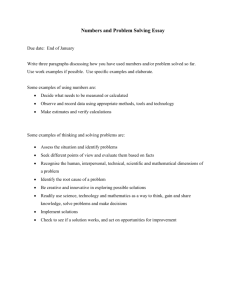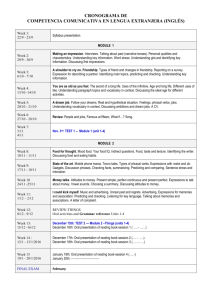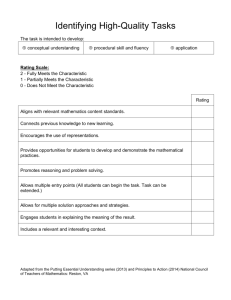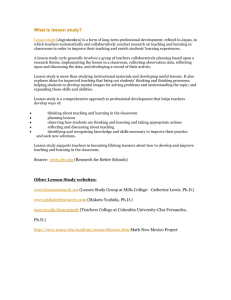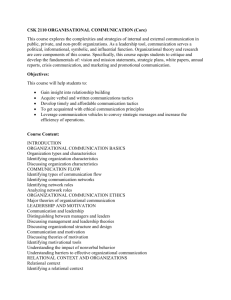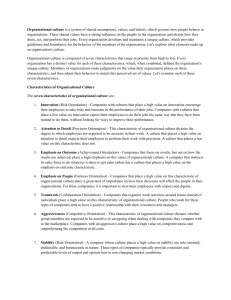Comparison and Contrast
advertisement
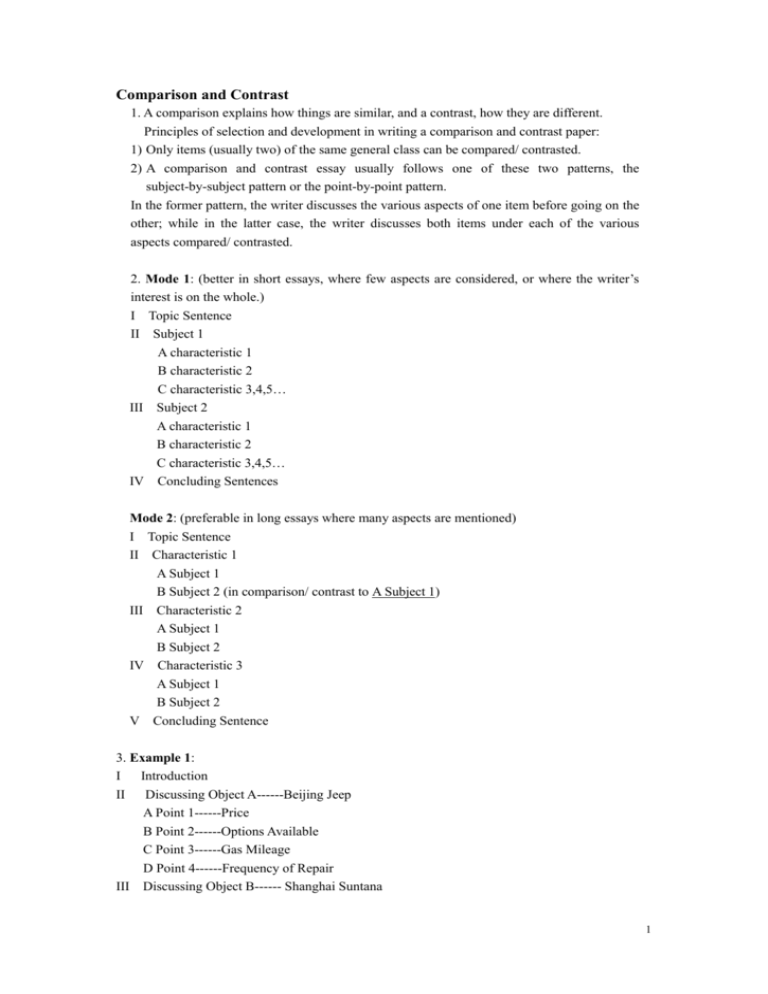
Comparison and Contrast 1. A comparison explains how things are similar, and a contrast, how they are different. Principles of selection and development in writing a comparison and contrast paper: 1) Only items (usually two) of the same general class can be compared/ contrasted. 2) A comparison and contrast essay usually follows one of these two patterns, the subject-by-subject pattern or the point-by-point pattern. In the former pattern, the writer discusses the various aspects of one item before going on the other; while in the latter case, the writer discusses both items under each of the various aspects compared/ contrasted. 2. Mode 1: (better in short essays, where few aspects are considered, or where the writer’s interest is on the whole.) I Topic Sentence II Subject 1 A characteristic 1 B characteristic 2 C characteristic 3,4,5… III Subject 2 A characteristic 1 B characteristic 2 C characteristic 3,4,5… IV Concluding Sentences Mode 2: (preferable in long essays where many aspects are mentioned) I Topic Sentence II Characteristic 1 A Subject 1 B Subject 2 (in comparison/ contrast to A Subject 1) III Characteristic 2 A Subject 1 B Subject 2 IV Characteristic 3 A Subject 1 B Subject 2 V Concluding Sentence 3. Example 1: I Introduction II Discussing Object A------Beijing Jeep A Point 1------Price B Point 2------Options Available C Point 3------Gas Mileage D Point 4------Frequency of Repair III Discussing Object B------ Shanghai Suntana 1 A Point 1------Price B Point 2------Options Available C Point 3------Gas Mileage D Point 4------Frequency of Repair IV Conclusion Example 2: I Introduction II Point 1-------Price A Discussing Object A------Beijing Jeep B Discussing Object B------Shanghai Suntana III Point 2------Options Available A Discussing Object A------Beijing Jeep B Discussing Object B------Shanghai Suntana IV Point 3------Gas Mileage A Discussing Object A------Beijing Jeep B Discussing Object B------Shanghai Suntana V Point 4------Frequency of Repair A Discussing Object A------Beijing Jeep B Discussing Object B------Shanghai Suntana VI Conclusion 4. Useful Expressions in Comparison Essay: 1) Both X and Y are _________. 2) X and Y have/ seem to have/ seemed to have/ happen to have sth in common/ much in common/ some features in common/ many features in common/ some common features. 3) X and Y are/ seem to be/ happen to be basically/ essentially/ to certain extent the same. 4) In the same way X ________, Y __________. 5) X corresponds to ___________. 6) A comparison between X and Y demonstrates/ results in/ reveals/ suggests/ shows/ seems interesting. 7) X is like Y in ____________. Useful Expressions in Contrastive Essay: 1) X is different from Y. 2) X differs from Y. 3) X and Y differ/ seem to differ as far as the main postulates are concerned. 4) There are some/ a great difference between X and Y. 5) In contrast to X, Y __________. 6) Unlike X, Y __________. 7) Whereas/ While/ Whilst X ___________, Y ____________. 8) X ___________ in contrast, Y __________. 9) Y __________, while/ whereas/ whilst on the other hand, X ___________. 2 5. Some transitions used in comparison: both, each, at the same time, similarly, like, likewise, as, too, also, compared with, etc. Some transitions used in Contrast: on the other hand, on the contrary, in contrast (with/ to), instead (of), the opposite (of), unlike, although, while, whereas, but, however, yet, nevertheless, etc. 6. Example: Traditional Family and Modern Family I Similarities (general idea) A Nuclear Family B The Role of Father C The Role of Mother II Differences A The Man Role 1. Traditional Family: Head of the household (work outside) Modern Family: Both work 2. Traditional Family: Man makes big decision Modern family: Shared by couples 3. Traditional Family: Man not help with housework Modern Family: Shared by couples B The Women’s Role 1. Traditional Family: Quit for birth Modern Family: Work after birth 2. Traditional Family: Live on man’s income Modern Family: Live on her own income C The Role of Children 1. Traditional Family: Taken care by mother Modern Family: Child-care centre 2. Traditional Family: School-age children dependent Modern Family: School-age children independent 6. Exercises 1) Travelling by Train and by Plane 2) Chinese and Western Medicine or Food 3
